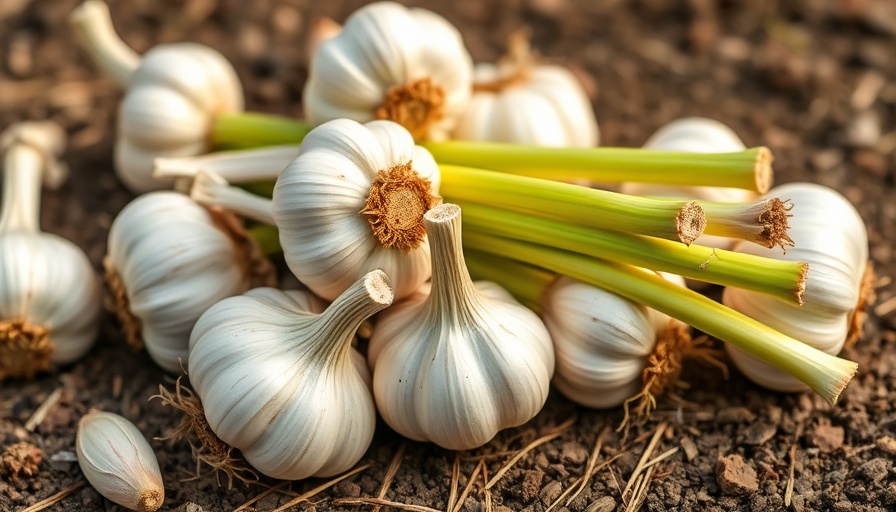
Transcending the Kitchen: Garlic and Tomatoes in the Garden
The classic combination of garlic and tomatoes is not just a culinary delight; it also serves as a powerful example of companion planting. This ancient agricultural practice, rooted in diverse cultures from North American indigenous groups to ancient Egyptian farmers, promotes planting certain crops together to create beneficial relationships. By interspersing plants like garlic and tomatoes in your garden, you can cultivate a healthier ecosystem without the need for chemical pesticides.
Why Garlic is a Garden Superhero
Garlic (Allium sativum) stands out in the garden for its unique properties. Thanks to its strong aroma and sulfur compounds, garlic acts as a natural pest deterrent, confusing foes like aphids and spider mites. Compounds such as diallyl disulfide and allicin contribute not only to garlic's pungent smell but also to its antibacterial and antifungal characteristics that help fend off diseases. This means that when garlic is planted near tomatoes (Solanum lycopersicum), it doesn’t just coexist; it enhances soil health and protects its neighbors.
The Synergistic Relationship Between Garlic and Tomatoes
When planted together, garlic and tomatoes thrive by aiding each other’s growth. Garlic’s pungent scent naturally repels many common garden pests, thus allowing tomatoes to flourish without interference. Additionally, garlic’s roots work to improve soil nutrient levels, which in turn enhances the growth of tomatoes. This symbiotic relationship benefits both plants, ensuring healthy yields and pest resistance.
Planting Techniques for Successful Growth
To ensure that both garlic and tomatoes thrive, proper planting techniques are crucial. Plant garlic cloves in the fall, allowing them to establish roots before winter. Tomatoes, meanwhile, should be planted in spring when the risk of frost has passed. As you garden, remember to space your plants adequately to allow for air circulation—this helps in preventing diseases and promoting healthy growth. Incorporate organic matter like compost to enrich the soil and provide essential nutrients for both crops.
Embracing Sustainable Practices in Gardening
Companion planting with garlic and tomatoes exemplifies the benefits of sustainable gardening. By following eco-friendly practices, gardeners can avoid harsh chemicals and create a balanced environment. Moreover, fostering knowledge about natural pest deterrents aligns with a broader trend towards climate-friendly gardening methods. Exploring organic fertilizers, promoting biodiversity, and utilizing effective seed starting techniques can lead to a more fruitful garden.
Common Gardening Misconceptions
One common myth is that companion planting is simply about mixing different types of plants without understanding their needs. In reality, successful intercropping requires knowledge of each plant’s requirements. For instance, knowing that garlic thrives in well-drained soil makes it clear why these two plants make such a dynamic duo; tomatoes benefit from the loose soil structure garlic provides, reducing the risk of rot immensely.
Putting Knowledge into Practice
Now that you understand the basics of planting garlic and tomatoes together, it's time to put this knowledge into practice. Gather your seeds, prepare your soil, and get ready to enjoy the benefits of this gardening hack. You’ll not only reap a bountiful harvest but also take pride in cultivating a nourishing environment for your plants to thrive.
Conclusion: Grow for Good
As you embark on your journey of growing garlic and tomatoes, remember the interconnectedness of the plants in your garden. By utilizing companion planting strategies, you can create a healthy, self-sufficient ecosystem. Start your sustainable gardening journey today, and embrace the joys of nurturing the land as you cultivate your own food.
 Add Row
Add Row  Add
Add 




 Add Row
Add Row  Add
Add 

Write A Comment